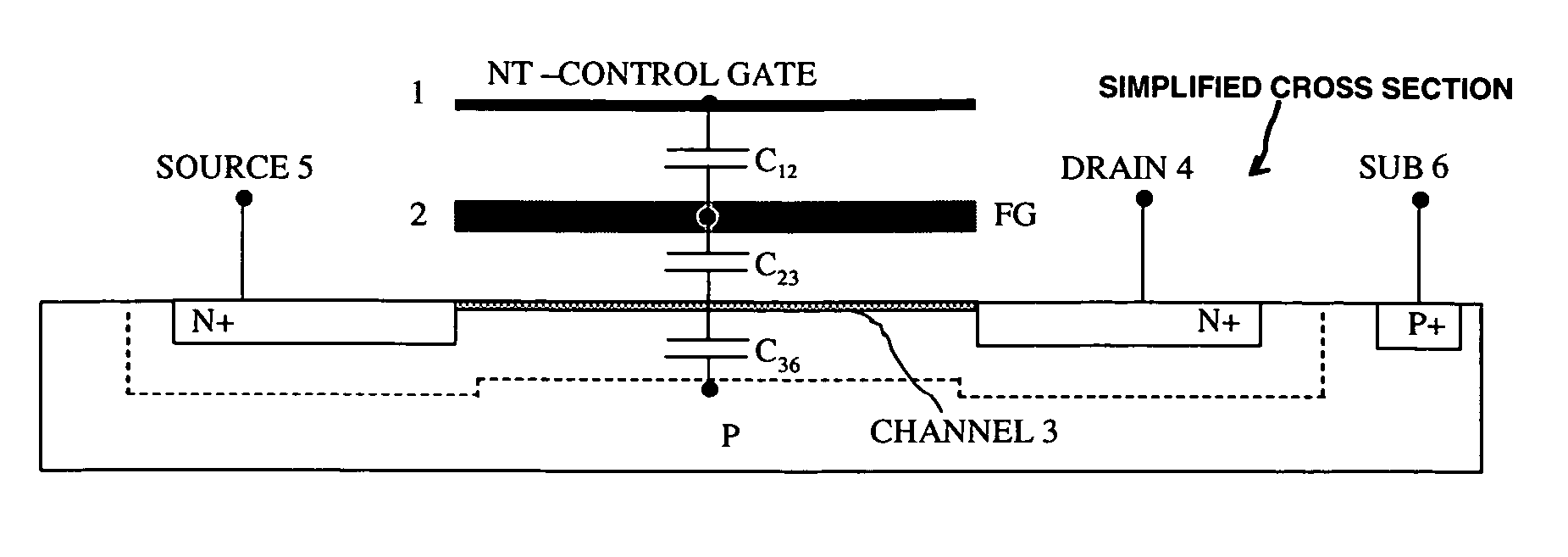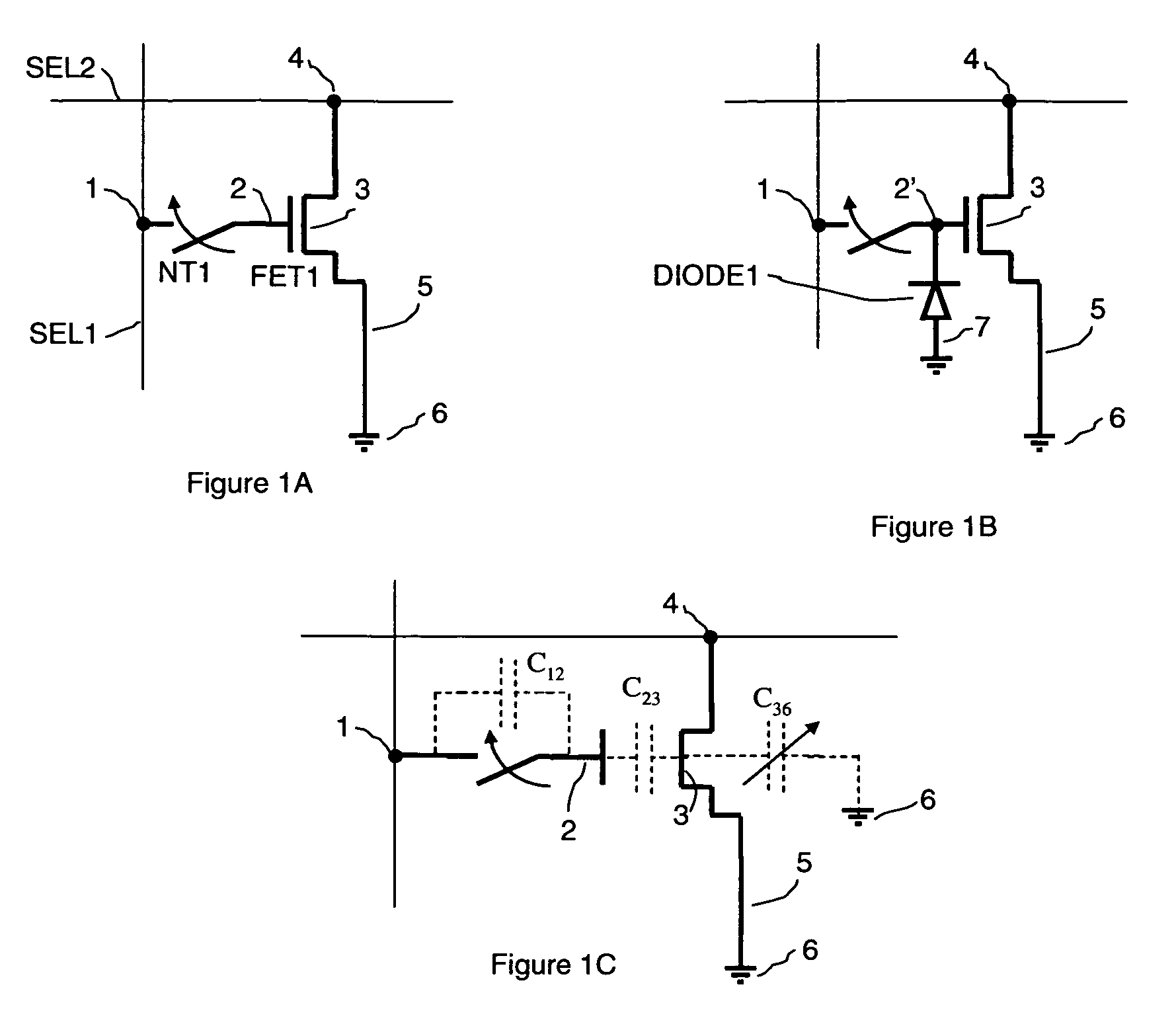Nanotube-on-gate FET structures and applications
a technology of nanotubes and transistors, applied in the field of nonvolatile transistor structures, can solve the problems of long write cycles (ms), low relative speed in comparison to dram or sram, and relatively low cost of rom,
- Summary
- Abstract
- Description
- Claims
- Application Information
AI Technical Summary
Benefits of technology
Problems solved by technology
Method used
Image
Examples
Embodiment Construction
[0067]The NT electromechanical switching components in the described embodiments incorporate a nanofabric component. More specifically, preferred embodiments provide transistor devices in which a nanotube switching element is integrated into a control element of the transistor, such as the gate of a FET device. (Nanotube switching elements are described in more detail in other applications and / or patents identified below, and are discussed herein to the extent relevant for understanding the preferred embodiments.)
[0068]FIG. 1A illustrates a nanotube (NT)-on-gate of FET approach. This structure utilizes a nanofabric-based switch NT1 which controls the FET transistor gate which controls the transistor channel, and therefore the current through the transistor as shown. The gate voltage of FET1 is not defined; it floats. Therefore if a voltage is applied to node 1 using SEL1, the voltage across nanotube NT1 is not known.
[0069]FIG. 1B changes the arrangement by adding DIODE1 between subs...
PUM
 Login to View More
Login to View More Abstract
Description
Claims
Application Information
 Login to View More
Login to View More - R&D
- Intellectual Property
- Life Sciences
- Materials
- Tech Scout
- Unparalleled Data Quality
- Higher Quality Content
- 60% Fewer Hallucinations
Browse by: Latest US Patents, China's latest patents, Technical Efficacy Thesaurus, Application Domain, Technology Topic, Popular Technical Reports.
© 2025 PatSnap. All rights reserved.Legal|Privacy policy|Modern Slavery Act Transparency Statement|Sitemap|About US| Contact US: help@patsnap.com



